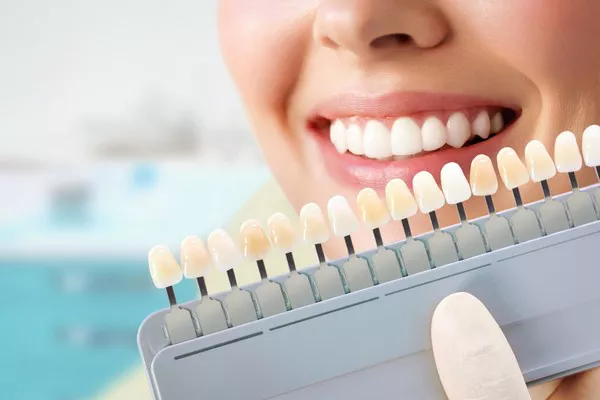The journey to a brighter and whiter smile often involves the use of teeth whitening strips, a popular at-home solution to combat tooth stains and discoloration. While the application of whitening strips is a straightforward process, understanding what to do after taking them off is equally crucial to maximize results and ensure the well-being of your teeth. In this comprehensive guide, we will explore the post-whitening care routine, address common concerns, and provide tips for maintaining a radiant smile long after the strips have been removed.
Understanding Whitening Strip Aftercare
The aftercare routine following the removal of whitening strips plays a pivotal role in the overall success of the teeth-whitening process. It involves a combination of oral hygiene practices, dietary considerations, and habits that contribute to sustaining the achieved results and promoting optimal oral health. Let’s delve into the essential steps to take after using whitening strips:
1. Rinse Your Mouth Thoroughly
After removing the whitening strips, start by rinsing your mouth thoroughly with water. This helps remove any residual whitening gel from your teeth and gums. A gentle rinse can also alleviate any lingering sensations and contribute to a fresh feeling in your mouth.
2. Avoid Eating or Drinking for a Short Period
In the immediate aftermath of using whitening strips, it’s advisable to avoid eating or drinking for about 30 minutes to an hour. This allows the teeth to recover from the whitening process and reduces the risk of introducing staining substances that could compromise the results.
3. Brush Your Teeth Gently
Following the waiting period, proceed to brush your teeth gently using a fluoride toothpaste. Use a soft-bristled toothbrush to avoid potential irritation, especially if your teeth are more sensitive after whitening. Pay attention to each tooth surface and ensure a thorough yet gentle cleaning.
4. Use Toothpaste for Sensitivity (If Necessary)
If you experience tooth sensitivity after using whitening strips, consider using a toothpaste formulated for sensitive teeth. These toothpaste varieties typically contain desensitizing agents that can help minimize discomfort. Use the toothpaste as directed, and consult with your dentist if sensitivity persists.
5. Maintain Good Oral Hygiene Practices
Consistent oral hygiene practices are vital for maintaining the results of teeth whitening. Continue to brush your teeth at least twice a day and floss daily to prevent the accumulation of plaque and staining substances. Good oral hygiene not only supports a healthy smile but also contributes to the longevity of whitening results.
6. Avoid Staining Substances
In the hours and days following the use of whitening strips, be mindful of consuming staining substances. Avoid or limit the intake of foods and beverages known for their staining potential, such as coffee, tea, red wine, and dark-colored berries. If you do consume these substances, consider using a straw to minimize direct contact with your teeth.
7. Steer Clear of Tobacco Products
Tobacco products, including cigarettes and smokeless tobacco, can contribute to tooth staining and compromise the results of teeth whitening. If you’ve invested in whitening strips to achieve a brighter smile, it’s advisable to avoid tobacco use to maintain optimal results and support overall oral health.
8. Stay Hydrated
Drinking water is not only beneficial for overall health but also aids in maintaining a bright smile. Water helps rinse away food particles and dilutes acids that could contribute to tooth staining. Stay hydrated throughout the day, and consider drinking water after consuming staining substances.
9. Consider Using a Whitening Toothpaste (Periodically)
To extend the longevity of your whitening results, consider using a whitening toothpaste periodically. Whitening toothpaste typically contains mild abrasives and polishing agents that can help remove surface stains. Use the toothpaste as directed and be mindful of any signs of sensitivity.
10. Attend Regular Dental Check-ups
Routine dental check-ups are essential for monitoring your oral health and addressing any concerns that may arise. Regular visits to your dentist allow for professional cleaning, examination, and guidance on maintaining the results of teeth whitening. Your dentist can provide personalized recommendations based on your oral health needs.
Common Concerns After Using Whitening Strips
Addressing common concerns that individuals may have after using whitening strips enhances the understanding of the whitening process and contributes to a positive post-whitening experience. Let’s explore these concerns and provide guidance on how to manage them:
1. Tooth Sensitivity:
Guidance: If you experience tooth sensitivity after using whitening strips, it’s a common and usually temporary side effect. Consider using a toothpaste designed for sensitive teeth, and avoid consuming extremely hot or cold foods. If sensitivity persists, consult with your dentist for personalized recommendations.
2. Uneven Whitening:
Guidance: Uneven whitening may occur due to variations in tooth structure or if the whitening strips do not make full contact with certain areas. Ensure proper placement of the strips during application. If uneven whitening persists, consult with your dentist to explore professional whitening options.
3. Gum Irritation:
Guidance: Mild gum irritation may occur if the whitening gel comes into contact with the gums. Applying a small amount of petroleum jelly to the gumline before using the strips can provide a protective barrier. If irritation persists, consult with your dentist.
4. Temporary Color Rebound:
Guidance: Some individuals may experience temporary color rebound, where the teeth appear slightly darker immediately after whitening. This is typically a transient effect, and the color usually stabilizes within a few hours. Avoid consuming staining substances during this period.
5. Maintenance of Results:
Guidance: To maintain the results of teeth whitening, practice good oral hygiene, avoid staining substances, and consider periodic use of a whitening toothpaste. Attend regular dental check-ups for professional cleaning and guidance on maintaining a bright smile.
Conclusion
Achieving a whiter and brighter smile with the help of whitening strips is a rewarding experience, and the steps you take after removing the strips are crucial for sustaining the results. By following a comprehensive aftercare routine that includes proper oral hygiene, dietary considerations, and habits that support oral health, you can enjoy the radiance of your newly whitened smile for an extended period.
Remember that individual experiences may vary, and it’s essential to listen to your body. If you encounter persistent sensitivity, uneven whitening, or any concerns, consult with your dentist for personalized guidance. With consistent aftercare and a commitment to oral health, you can confidently showcase your revitalized and radiant smile.
































